Architect Francesca Perani has transformed the porch of an Italian villa into a 25-square-metre micro-apartment suitable for self-isolation with plenty of hidden storage.
Designed for a local couple, Urban Cabin replaces the porch of a house in Albino, a small town in the Italian province of Bergamo.
Perani’s renovation, completed with the help of interior designer Ilenia Perlotti, turns the former storage space into a separate, self-contained residence that can be used for a number of purposes.
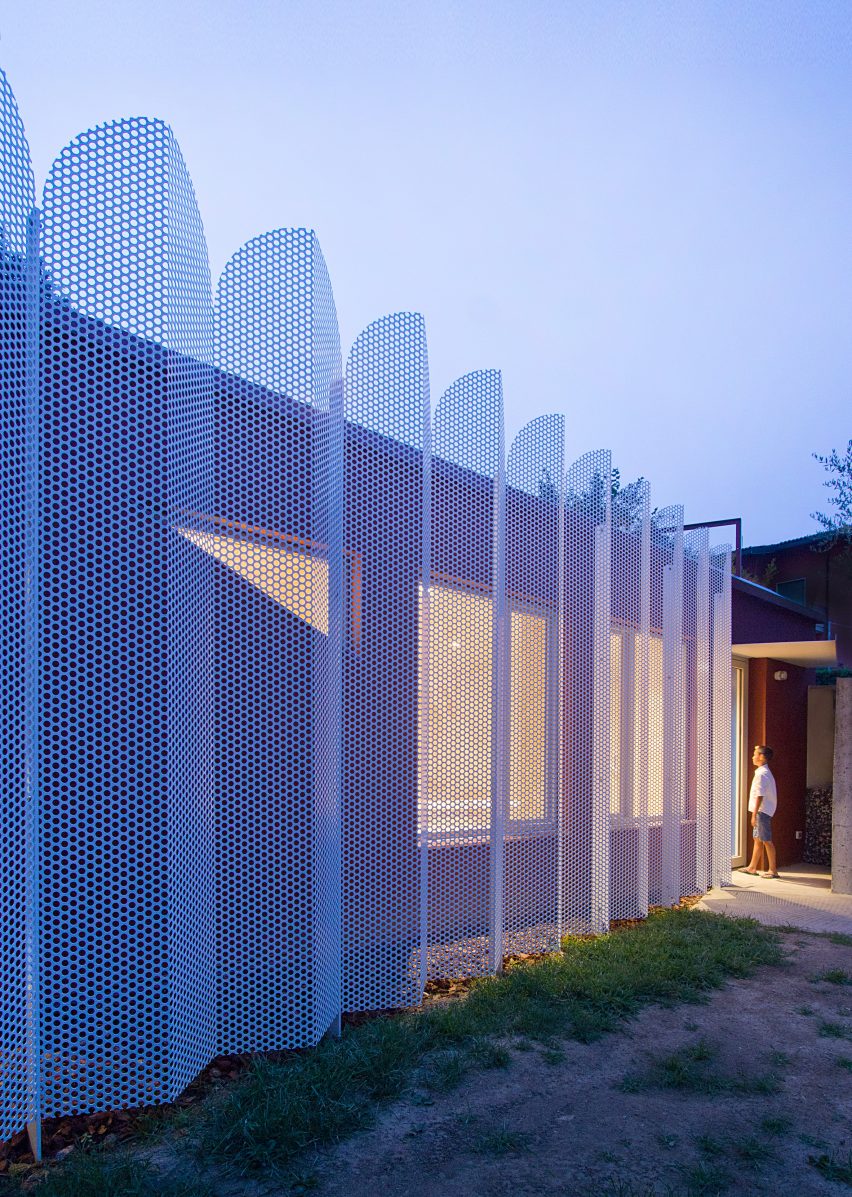
The clients can use it as a workspace, invite guests to stay or, one day, let their grown-up children move in. Recently, because of the coronavirus crisis, one of the pair has been using it as a self-isolation space.
To suit all these purposes, the designers planned the micro-apartment to be as flexible as possible, with plenty of storage. But they also designed it to have a sense of fun, filled with graphical shapes and vibrant colours.
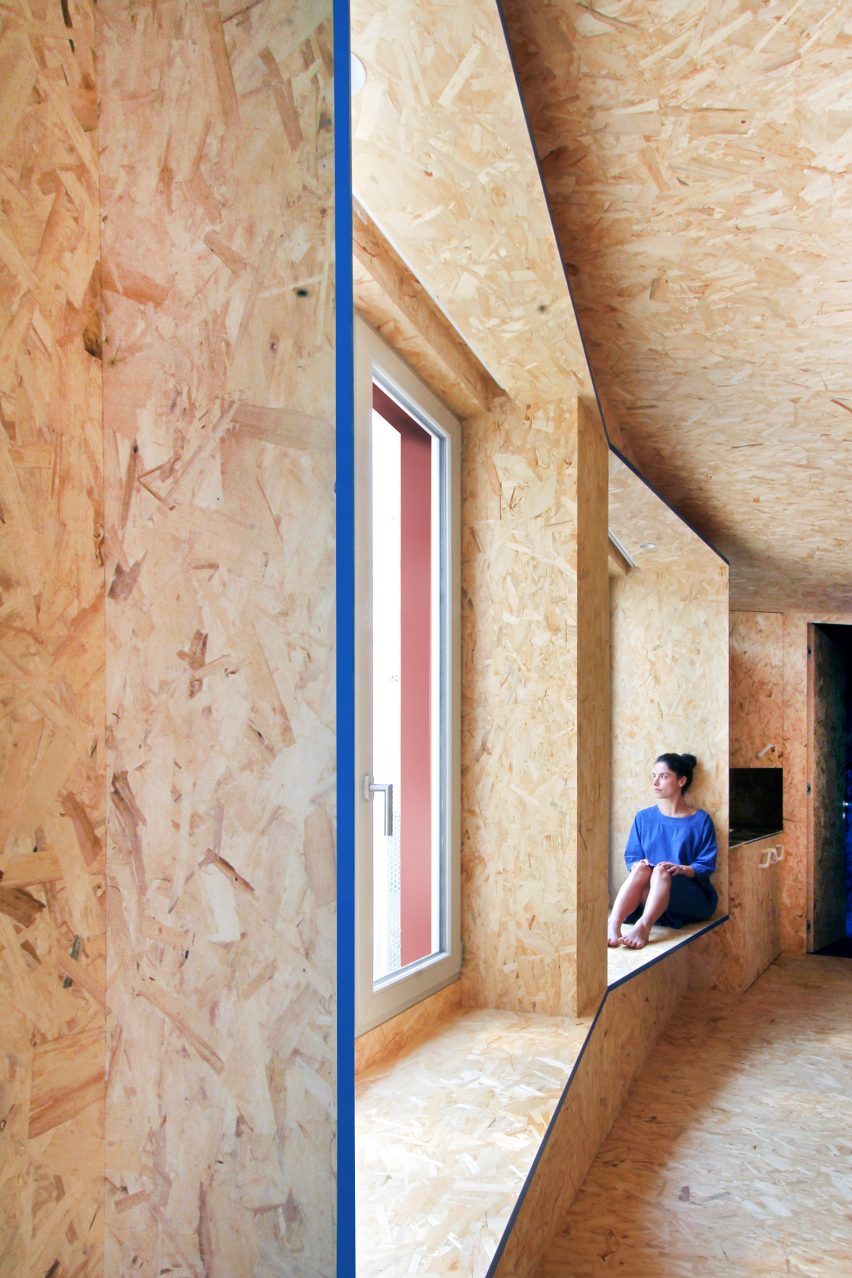
“I am very interested in experimenting and pushing myself towards risky options,” explained Perani.
“I believe can make spaces more emotionally involving,” she told Dezeen. “Since the beginning of my practice, I have always battled against straight lines and the minimalist approach. I am curious about exploring a pop architecture.”
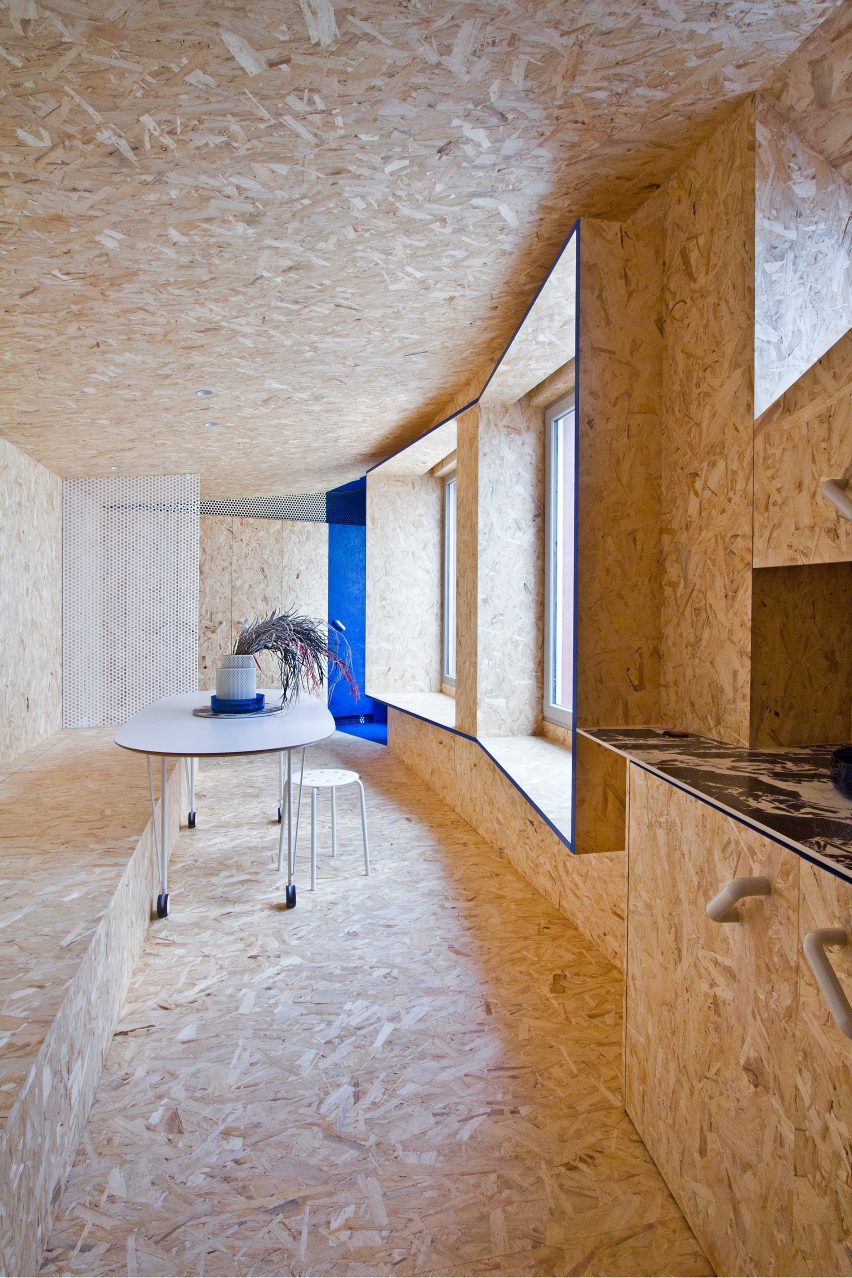
Perani worked on the renovation of the main house back in 2008. Externally, this new addition is designed in the same spirit, with a red earth-coloured facade and details that reference the clients’ Persian heritage.
Folded sheets of perforated metal create a series of arches in front of the home, acting a sun shade. This made it possible for Perani to design large windows, even though the home faces directly south.

Inside, the layout is kept open to make it feel spacious. Apart from the bathroom, all activities take place in a single room.
The open-plan living space includes a distinct kitchen, along with various multifunctional furniture pieces. Storage areas are slotted in and around these elements, to make the most of space.
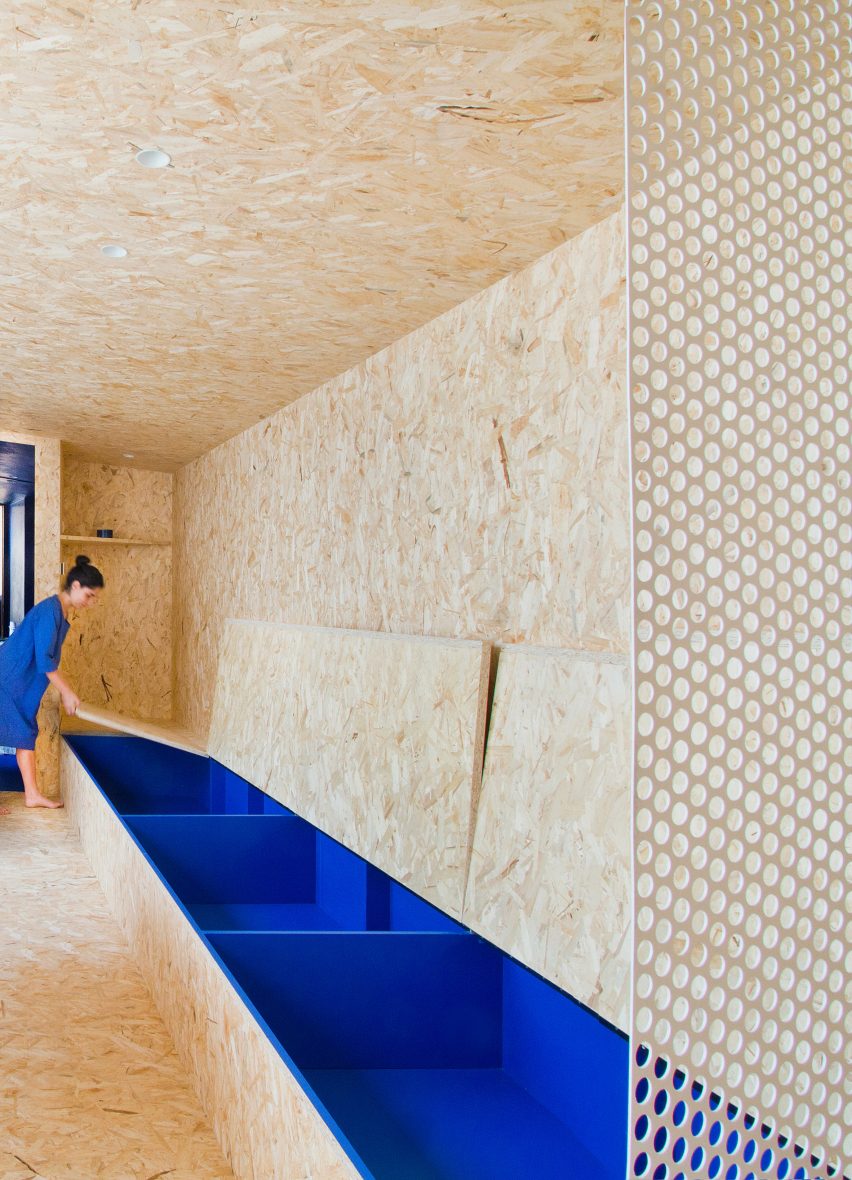
“The limited dimensions and extreme narrowness of the existing building suggested a full custom-designed interior, where flexibility and multi-usage became key factors,” explained Perani.
“Diagonal lines are deliberately used in order to deliver more functionality and movement.”
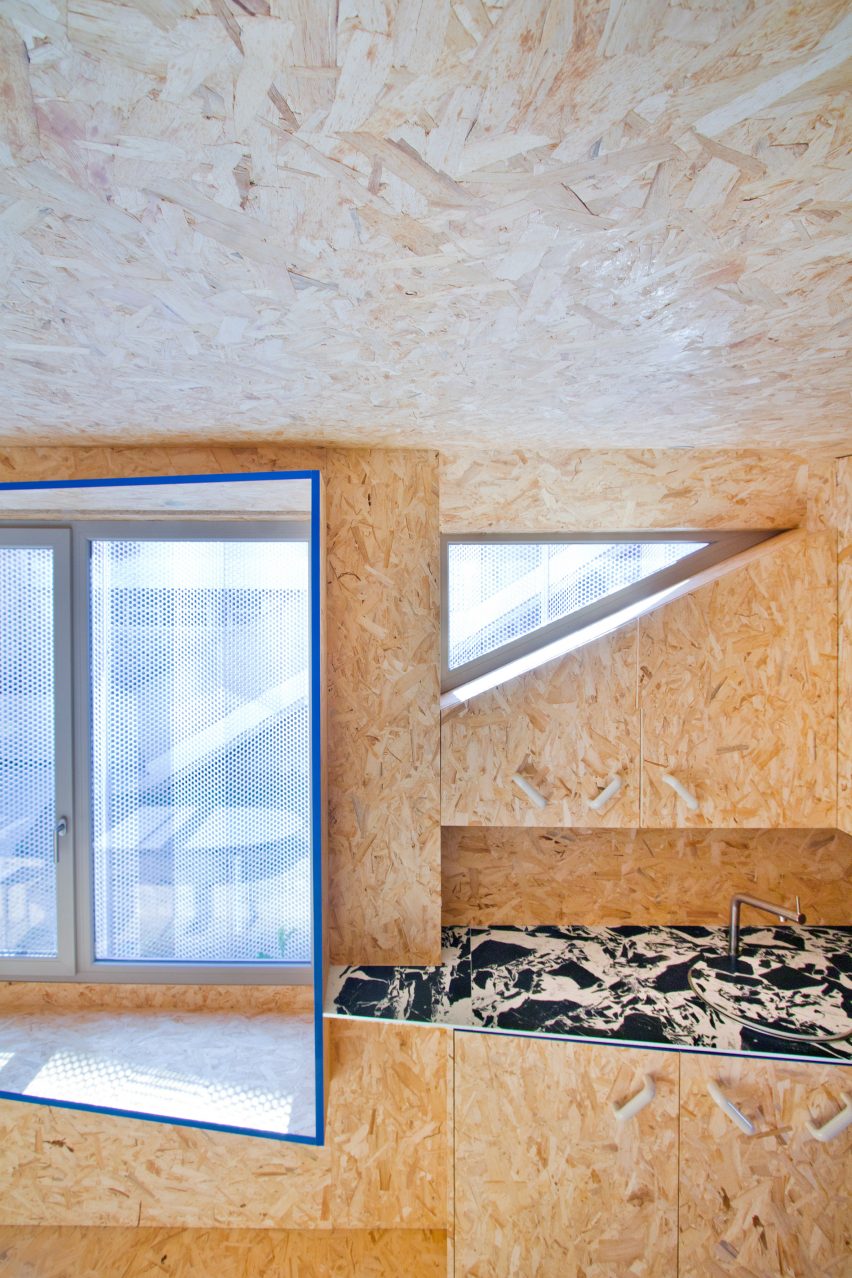
Surfaces and objects in this space are built from oriented strand board, or OSB, a type of engineered board featuring large wood strands. This includes window boxes that double as seats and a long daybed/storage chest.
There are also wardrobes beside the entrance, which conceal the heating system and washing machine, but also accommodate a study desk.
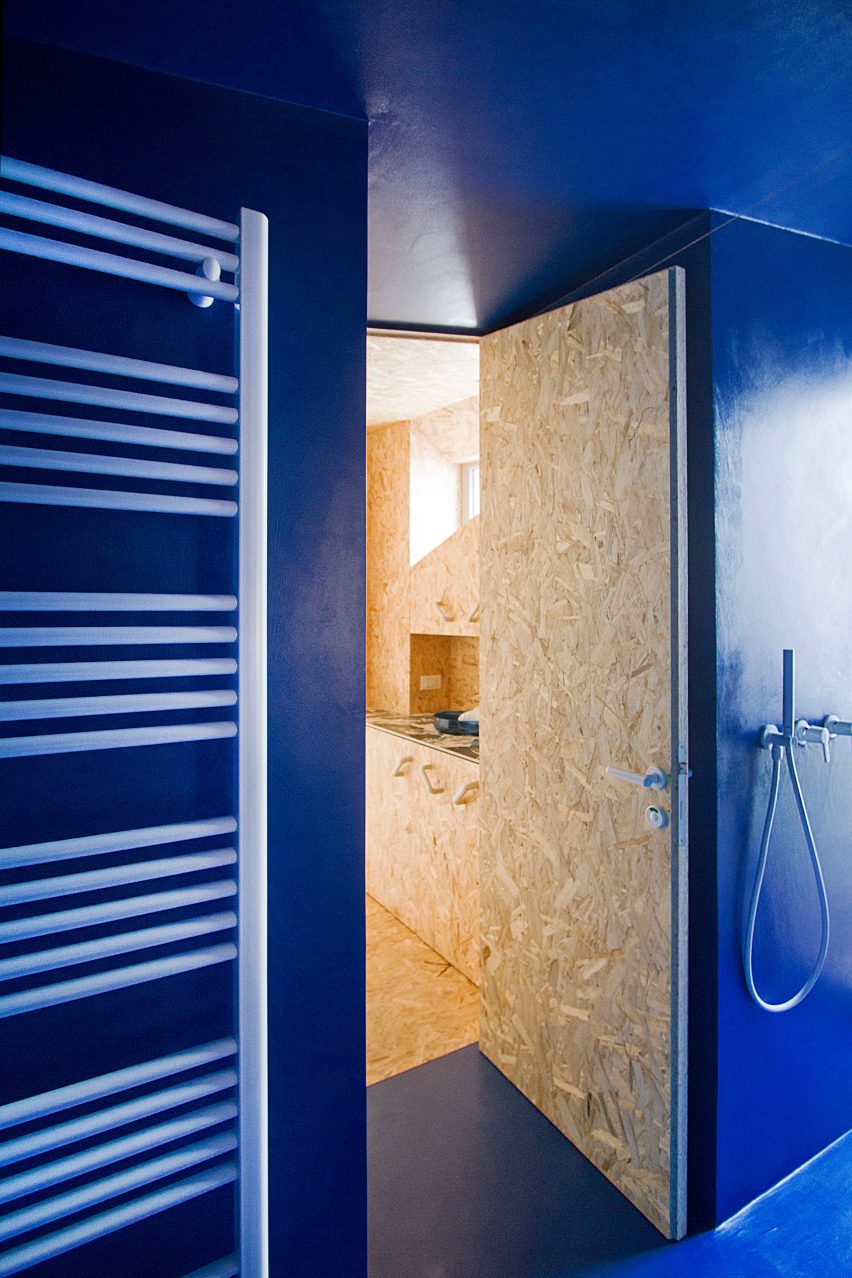
“I wanted to give the space a sense of warm comfort,” said Perani. “I wanted a fluid continuous pattern that could make the space feel bigger, one texture for floor, paving, walls and soffit.”
“I have always seen OSB used on building sites and I love its textural irregularity, random organic composure and recycled properties,” she added.
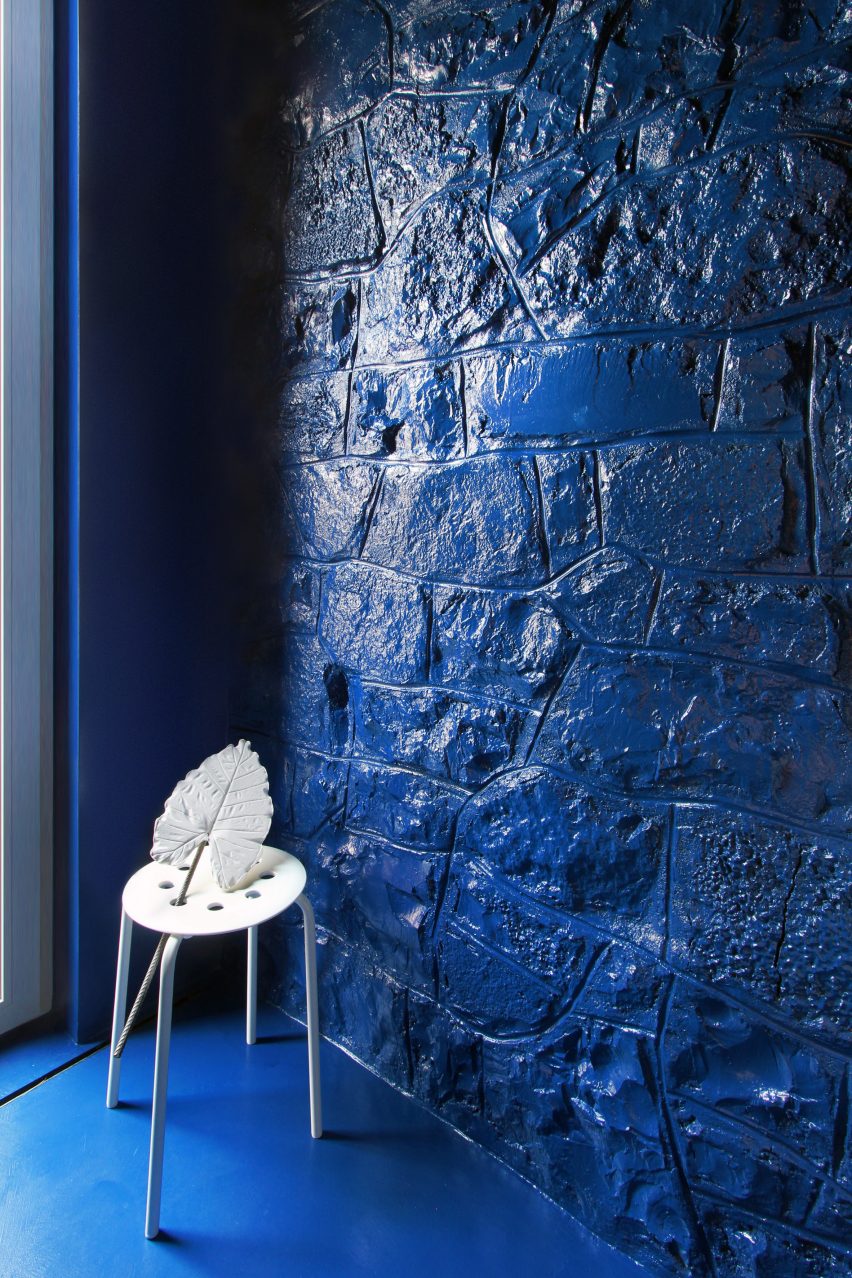
Details are picked out in royal blue, the same colour used in the bathroom, while the kitchen worktop features a monochrome print designed to resemble marble.
Despite the home’s small size, the bathroom is designed to feel generous. A window fronts the shower, so that residents can look out over the garden but without fear of losing their privacy.
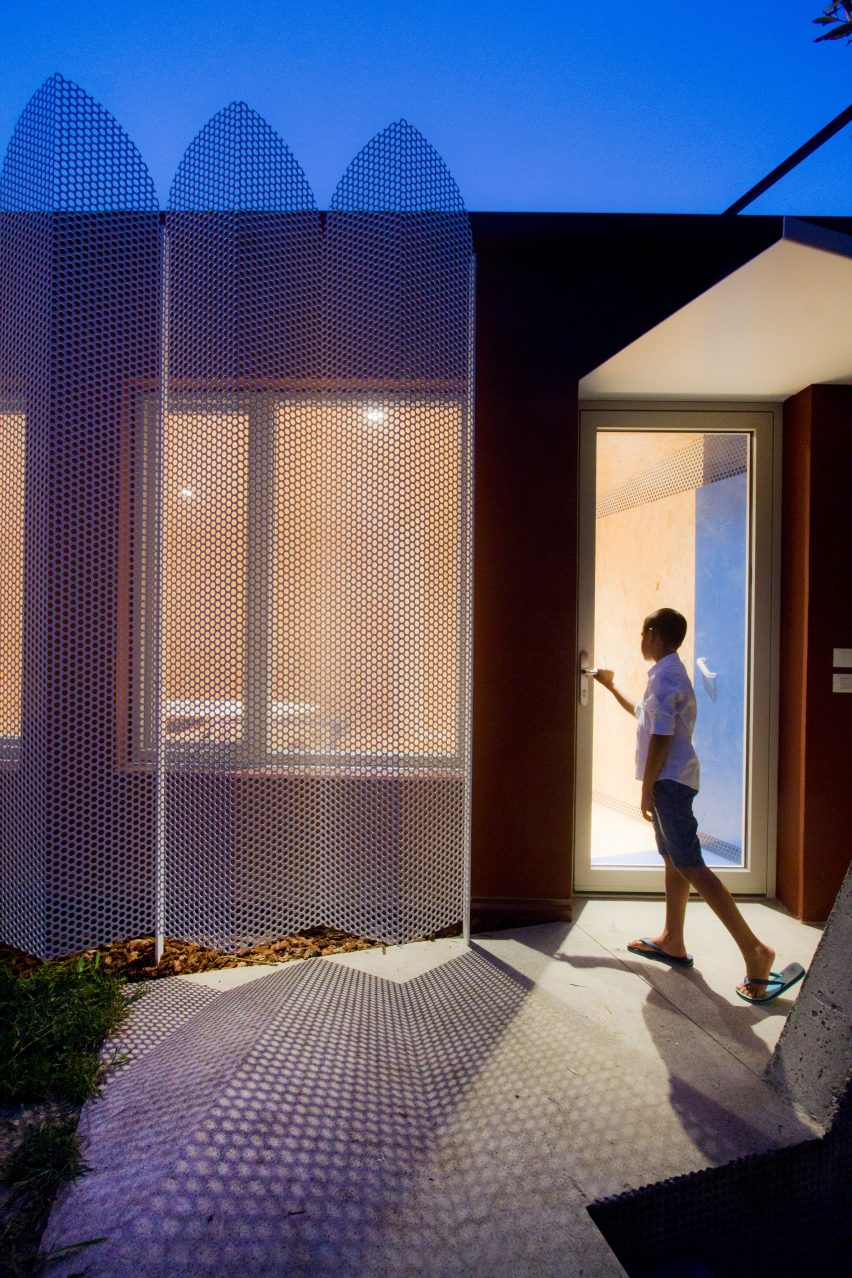
As well as being an architect, Perani is also a graphic designer and an activist.
She leads RebelArchitette, a campaign group that fights for women’s rights in architecture, while her side project Cutout Mix offers resources for architectural illustrations.
Photography is by the architect, with styling by Chiara Birolini.
Project credits:
Project leader: Francesca Perani
Interior designer: Ilenia Perlotti
Junior architect: Ilaria Odoli
Engineer: Roberto Belotti
Heat engineer: Luca Noris – Progterm
Builder: Gherardi Giuseppe
Metal shadings: Valoti Giovanni
Decorator: Diego Armellini
Carpenter: DueMMe
Lighting: Due Effe Illuminazione
Source: Rooms - dezeen.com


